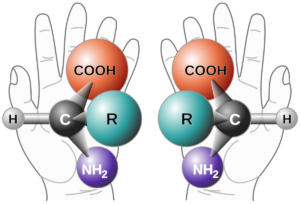Recent Discovery:
In a major development in condensed matter physics, scientists have identified a chiral quantum state within the topological Kagome lattice material KV₃Sb₅—a substance previously not known to exhibit chirality. This finding represents a significant advancement in the understanding of quantum materials.

Understanding Chirality
- Chirality, often described as “handedness,” refers to the characteristic of an object or structure that cannot be superimposed on its mirror image.
- It is a fundamental property in nature, seen in biomolecules like amino acids, the helical structure of DNA, and various biological spiral forms.
- Molecules typically exist in left-handed (L) and right-handed (D) configurations, which have crucial implications in fields like biochemistry and quantum mechanics.
KV₃Sb₅ and the Kagome Lattice
- KV₃Sb₅ is a quantum material that crystallizes in a Kagome lattice—a geometric framework made up of interconnected triangular units.
- The Kagome structure, derived from a traditional Japanese weaving style, has attracted scientific interest due to its capacity to host unusual electronic and magnetic properties, including topological states and exotic quantum phases.
Research Methodology
- Researchers employed an advanced technique called the Scanning Photocurrent Microscope (SPCM) to investigate the material.
- Unlike the Scanning Tunneling Microscope (STM), which images surfaces at atomic resolution, the SPCM captures nonlinear electromagnetic responses, enabling the detection of chirality in photocurrent signals.
- The discovery was confirmed through observation of the circular photogalvanic effect (CPGE)—a hallmark of chiral behavior.
Key Observations
- A charge density wave (CDW) exhibiting spontaneous symmetry breaking was detected in KV₃Sb₅.
- When cooled to 4 Kelvin, the material responded differently to right- and left-circularly polarized light, indicating a loss of inversion and mirror symmetry.
- This provides the first clear evidence of a naturally occurring chiral charge arrangement in a bulk topological quantum system.




